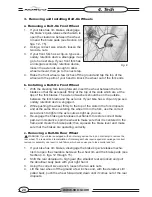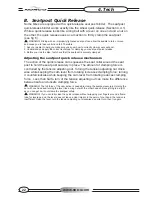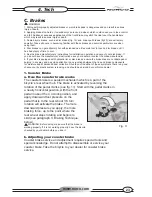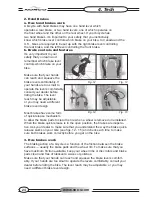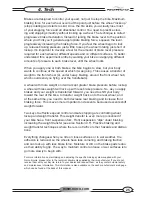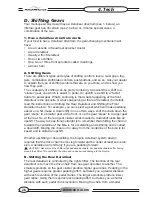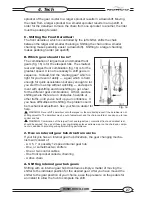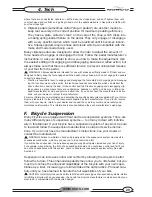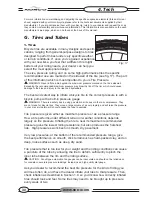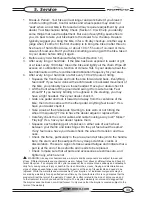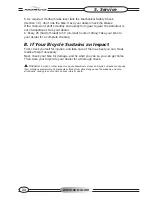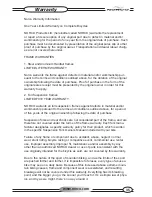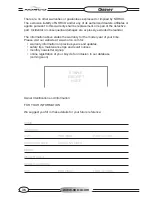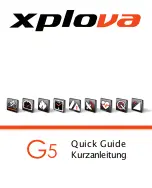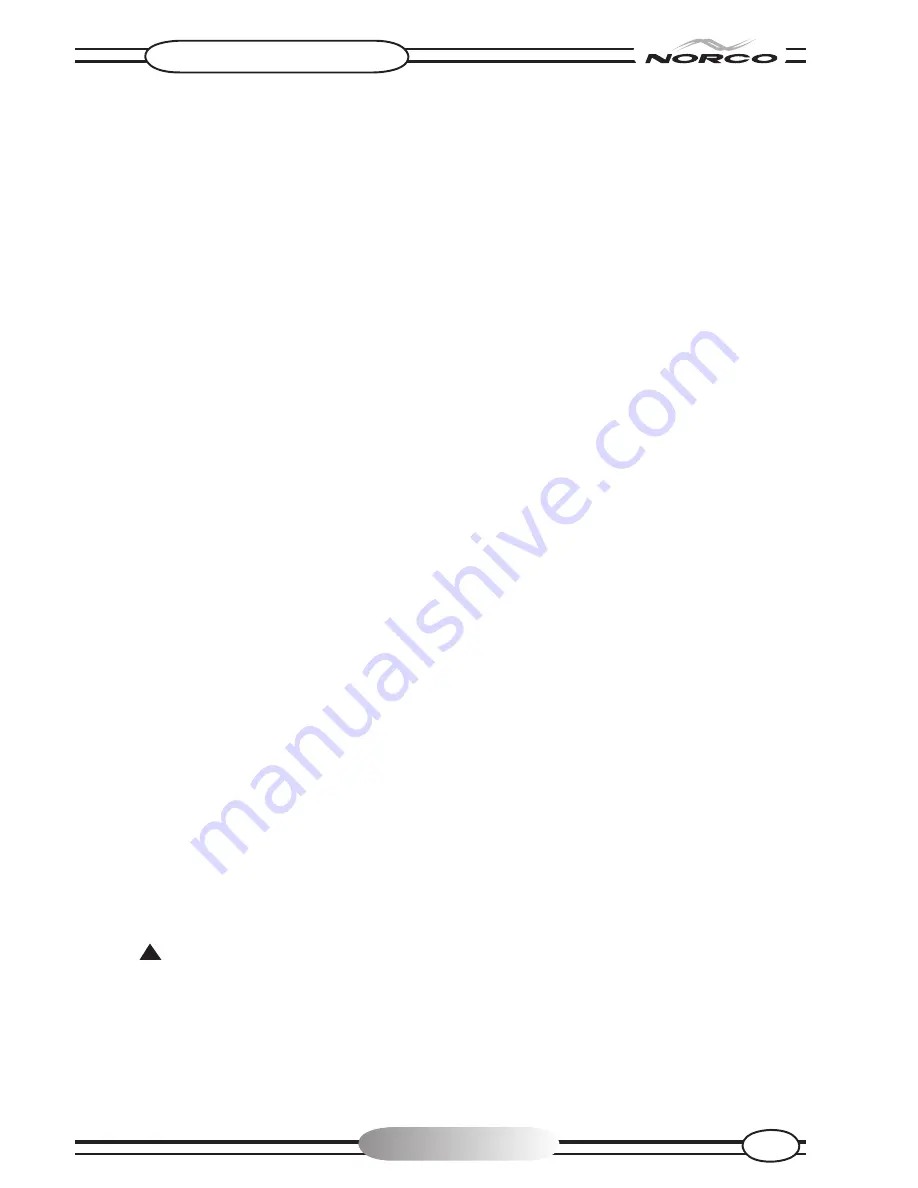
www.norco.com
33
1. Break-in Period: Your bike will last longer and work better if you break it
in before riding it hard. Control cables and wheel spokes may stretch or
“seat” when a new bike is first used and may require readjustment by your
dealer. Your Mechanical Safety Check (Section 1.C) will help you identify
some things that need readjustment. But even if everything seems fine to
you, it’s best to take your bike back to the dealer for a checkup. Dealers
typically suggest you bring the bike in for a 30 day checkup. Another way to
judge when it’s time for the first checkup is to bring the bike in after three to
five hours of hard off-road use, or about 10 to 15 hours of on-road or more
casual off-road use. But if you think something is wrong with the bike, take it
to your dealer before riding it again.
2. Before every ride: Mechanical Safety Check (Section 1.C)
3. After every long or hard ride: if the bike has been exposed to water or grit;
or at least every 100 miles: Clean the bike and lightly oil the chain. Wipe off
excess oil. Lubrication is a function of climate. Talk to your dealer about the
best lubricants and the recommended lubrication frequency for your area.
4. After every long or hard ride or after every 10 to 20 hours of riding:
• Squeeze the front brake and rock the bike forward and back. Everything
feel solid? If you feel a clunk with each forward or backward movement of
the bike, you probably have a loose headset. Have your dealer check it.
• Lift the front wheel off the ground and swing it from side to side. Feel
smooth? If you feel any binding or roughness in the steering, you may
have a tight headset. Have your dealer check it.
• Grab one pedal and rock it toward and away from the centerline of the
bike; then do the same with the other pedal. Anything feel loose? If so,
have your dealer check it.
• Take a look at the brake pads. Starting to look worn or not hitting the
wheel rim squarely? Time to have the dealer adjust or replace them.
• Carefully check the control cables and cable housings. Any rust? Kinks?
Fraying? If so, have your dealer replace them.
• Squeeze each adjoining pair of spokes on either side of each wheel
between your thumb and index finger. Do they all feel about the same?
If any feel loose, have your dealer check the wheel for tension and true-
ness.
• Check the frame, particularly in the area around all tube joints; the handle-
bars; the stem; and the seatpost for any deep scratches, cracks or
discoloration. These are signs of stress-caused fatigue and indicate that a
part is at the end of its useful life and needs to be replaced.
• Check to make sure that all parts and accessories are still secure, and
tighten any which are not.
WARNING: Like any mechanical device, a bicycle and its components are subject to wear and
stress. Different materials and mechanisms wear or fatigue from stress at different rates and have dif-
ferent life cycles. If a component’s life cycle is exceeded, the component can suddenly and catastrophi-
cally fail, causing serious injury or death to the rider. Scratches, cracks, fraying and discoloration are
signs of stress-caused fatigue and indicate that a part is at the end of its useful life and needs to be
replaced. While the materials and workmanship of your bicycle or of individual components may be
covered by a warranty for a specified period of time by the manufacturer, this is no guarantee that the
product will last the term of the warranty. Product life is often related to the kind of riding you do and
to the treatment to which you submit the bicycle. The bicycle’s warranty is not meant to suggest that
the bicycle cannot be broken or will last forever. It only means that the bicycle is covered subject to the
terms of the warranty.
5. Service
Summary of Contents for multi-speed bicycles
Page 1: ...for multi speed bicycles 7th Edition www norco com ...
Page 2: ......


